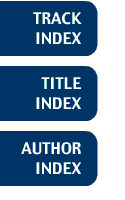
Track: State/Local Government, Cadastral, Land Records
Conservation and Development Policies Plan for Connecticut 1998-2003

Sheila SullivanWilliam Schlichtig
The State of Connecticut, Office of Policy and Management is responsible for preparing the Conservation and Development Policies Plan for Connecticut (the Plan) every five years. The Plan sets out the State's growth, resource management, and public investment policies that in turn influence State supported future growth and development. The Plan seeks to guide a balanced response to human, environmental, and economic needs in a manner that best suits the future of Connecticut. Major issues affecting the future of Connecticut's landscape and economy are investigated in the Plan. These are the broad, mostly well-known challenges that Connecticut faces such as the continuing shift in our economic base from manufacturing to service, the racial and economic isolation of urban populations, overburdening of parts of the transportation system, inefficient land use, and achieving and maintaining a healthy environment. The State's recommended response to those issues are set forth in the form of proposed goals, policies, and strategies that address those issues. A major component of the Plan is the Plan Locational Guide, which distills the Plan goals, policies, and strategies into an overall conservation and development strategy. This strategy is basically to reinforce and conserve existing urban areas; to promote staged, appropriate, sustainable development; and to preserve areas of significant environmental value. The Guide apportions the State into eight land categories according to each area's characteristics and suitability for different forms of development or conservation action. The eight land categories are depicted on the Plan's Locational Guide Map. The current five-year revision cycle of the Plan saw the Guide Map produced digitally for the first time. Natural resource data, census demographics, FEMA flood mapping, aerial photography, and local plans of development and zoning were used to determine the appropriate forms of development or conservation applicable to a given location. The eight land categories and specific strategies for each fall into three subgroups: Urban Areas: Regional Centers - Economic and physical revitalization, highest development priority. Neighborhood Conservation Areas - Ensure continued stability, promote compatible infill. Growth Areas - Staged, contiguous growth at an urban scale supported by infrastructure. Rural Areas: Rural Community Centers - Civic and service centers, multiple uses may be appropriate. Rural Lands - Low-density uses, maintain open character. Areas of Environmental Concern: Existing Preserved Open Space - Permanently maintain and manage for current uses. Preservation Areas - Almost "no-build" areas. Conservation Areas - Any development must be compatible with the resource.
Sheila Sullivan
State of Connecticut
P. O. Box 341441
450 Capitol Avenue
Hartford, CT 06134-1441
USA
Telephone: 860-418-6407
Fax: 860-418-6495
E-mail: Sheila.Sullivan@po.state.ct.us